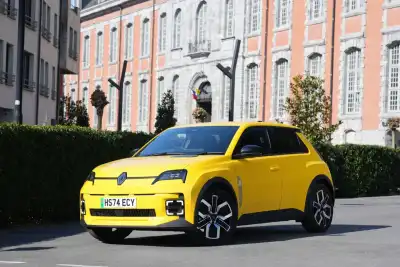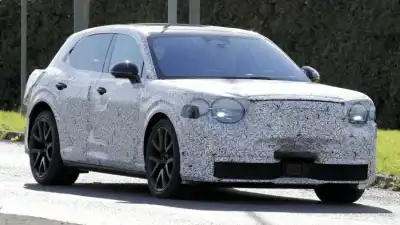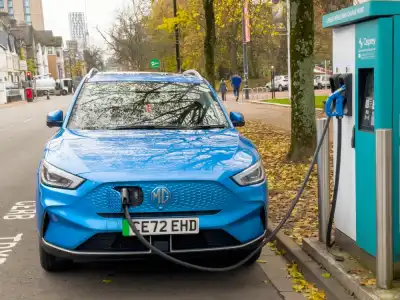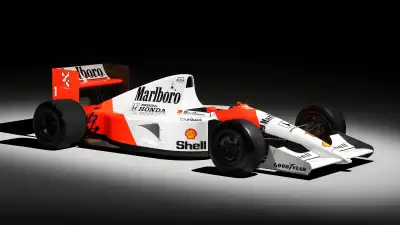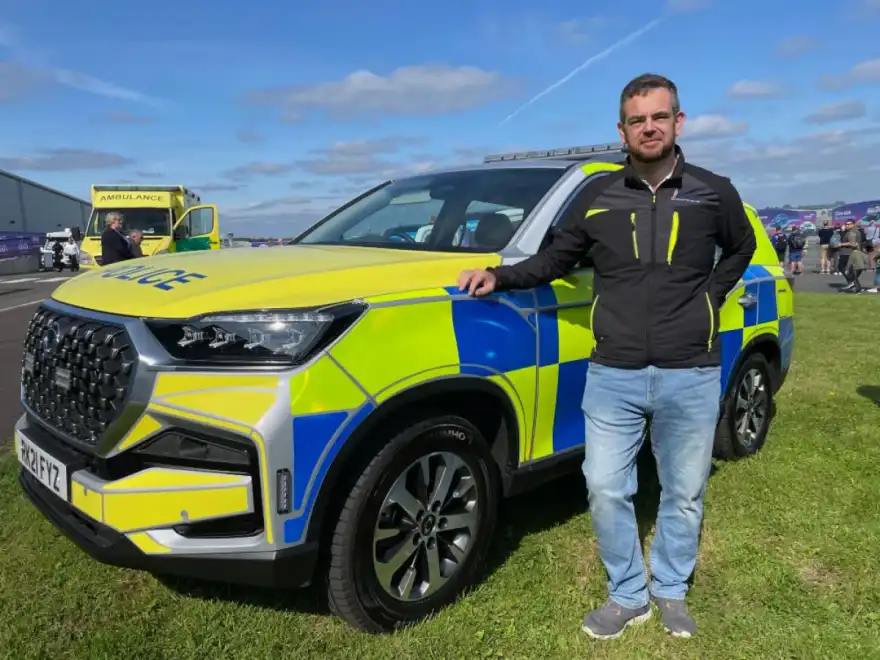
Ever wondered why one minute you’re seeing a police car flashing its blue lights while decked with BMW badging and the next minute it’s an unmarked Skoda vRS model? Well, the answer is not quite as simple as you might think.
That’s because, despite what we might believe, police forces up and down the country don’t just pick the flashiest, fastest cars for their ultimate in road presence.
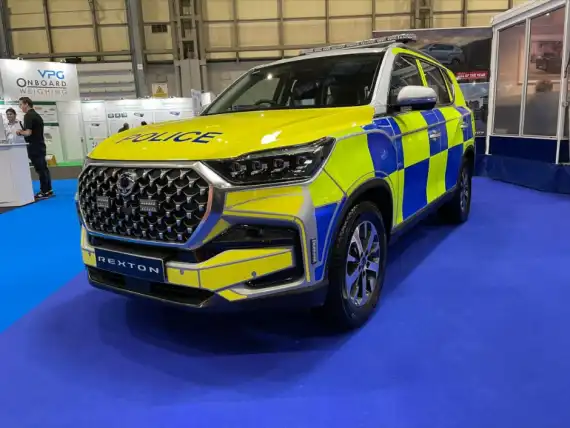
They, like the rest of us, have strict rules to follow and the latest legislation is laid out by the CCS. That is the Crown Commercial Service and it is the largest UK procurement organisation that helps the public sector, such as the police for example, get maximum value when buying goods or services. And it’s very big business as the CCS helped the public sector with £2.04bn worth of goods in 2020/21.
Tammy Carter, Head of Fleet for the CCS, explained: "We have been working closely to support the fleet requirements of the UK’s police authorities for the past seven years. Currently around 16 per cent of all vehicles acquired via CCS agreements are for UK police forces, with customers procuring everything from new vehicles and tyres, to telematics and vehicle conversions.
"All makes and models of vehicles from the UK market are available to our customers - meeting the hugely diverse range of operational needs, and providing choice and competition in the market. We make sure that all vehicles are available to our public sector customers - including electric and ultra-low emissions vehicles.
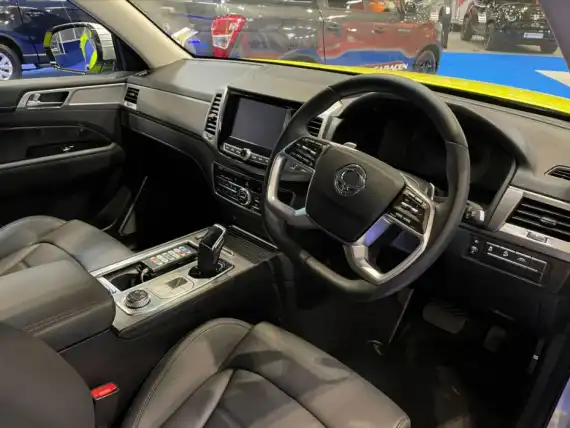
“Our vehicle purchase agreement offers 21 suppliers for cars and motorcycles, and 14 for light commercial vehicles via dedicated blue light lots. These lots have been developed with the National Association of Police Fleet Managers, reflecting their exact specification requirements for the technical nature of their operations.
“Police authorities are able to choose from standard-build or specially modified vehicles from the manufacturers - all managed through a single contract that includes after-sales support, vehicle maintenance training and the manufacturer's parts.”
So, if a car manufacturer believes they have a model that would suit the arduous requirements of the emergency services, they can submit their application to the CCS, where its suitability is assessed.
If given the green light, it is added to the list of suitable models that the likes of the police can choose from. For example, SsangYong models are being snapped up by the emergency services, as Kevin Griffin, SsangYong Motor UK Managing Director, said: “All SsangYong models are available on the CCS framework from July 2018. The most popular and practical models for specialist operations are Rexton and Musso. The fact that the emergency services have bought into SsangYong product is fantastic for the brand and gives the message of reliability, practicality, value for money. It’s great for brand awareness.
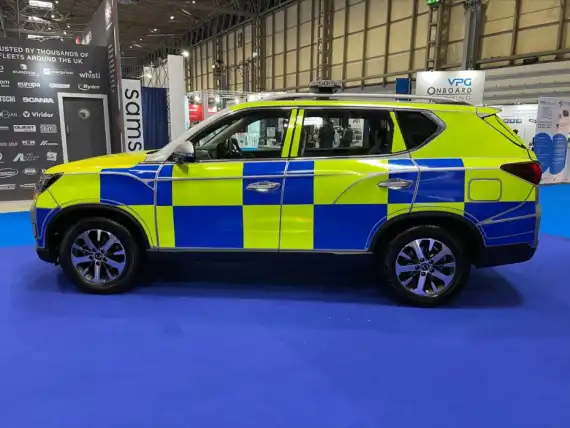
“We have been successful with various contracts including National Highways (formerly Highways England), the Metropolitan Police, North Wales Fire Service, South Central Ambulance Service, Cheshire Constabulary, Northamptonshire Police, as well as private ambulance companies. We have also supplied into local councils.”
But how does a standard car get transformed into one that flies up and down the motorways fully decked out in reflective chevrons and blue flashing lights? Well, it seems it all depends on the customer as Kevin Griffin explained: “SsangYong Motor UK can supply the base vehicle or supply with full conversion as a “one-stop-shop”. Some emergency services have their own contracts with conversion companies and so use them, others want a hassle free one order, one invoice scenario. We use different converters for after-market accessories.”
One company that helps transform the vehicles so they really look the part is BT-HS, based in Chorley, Lancashire.
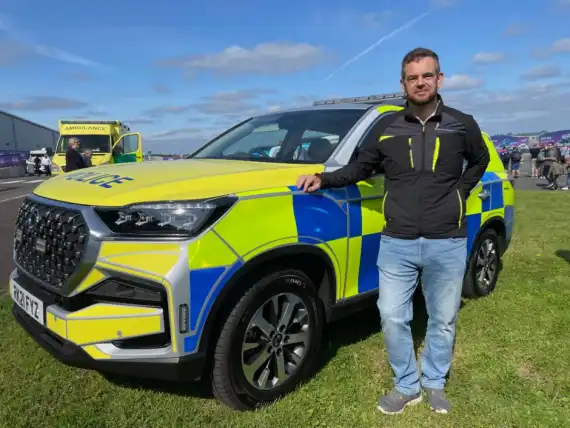
The company was formed in 2018 and we caught up with Phil Glaiser, BT-HS company director, who talked us through the process.
He said: “The design consultation with the customer determines their specification requirements. Each customer has a different specification and operational requirement, so it is important we completely understand each customer’s needs and use of the vehicle.
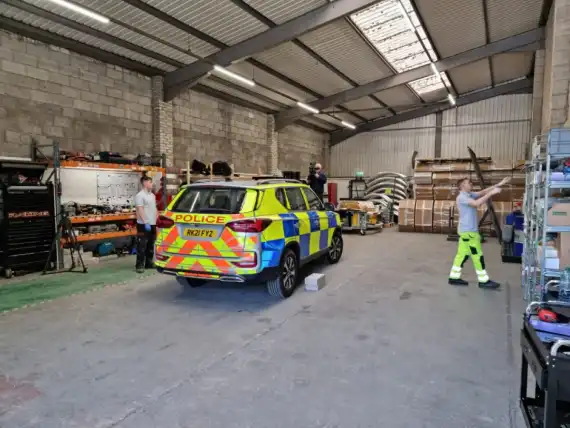
“We then either source the donor vehicle on behalf of the customer or the customer supplies their own vehicle, like with the SsangYong Rexton that we worked on for the police.”
And it’s quite a lengthy conversion process. Phil explained: “Initially we start the exterior vinyl and wrapping process first prior to the electrical installations. We do this because it allows the application to be done correctly while all the panels are still in situ on the vehicle. This ensures that the fitment is aligned correctly and that any adjustments can be made.
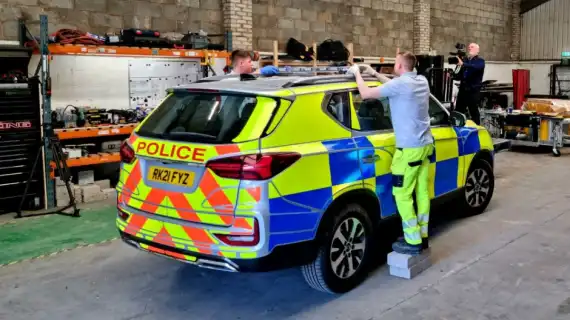
“We then prepare the vehicle by removing the various internal trim panels to allow us to access cable routing areas for the additional equipment. This normally involves removing the roof headlining, large elements of the dashboard, A pillar, B pillar and C pillar trims, door trims, central console and on occasions seats.
“The next step involves removing any exterior panels as required for the fitting of additional lighting, with the Rexton the complete bumper and wheel arch interiors were removed as were the wing mirrors, roof rails and boot.
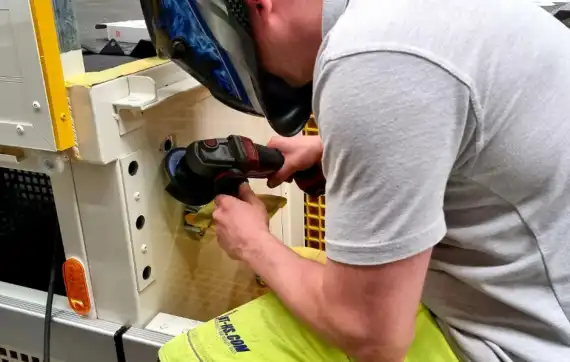
“We then start the process of installing the exterior lighting onto the removed panels ensuring that each light is measured to ensure that both near and offsides are symmetrical. Once completed the panels are then put back onto the vehicle
“Any roof rails and roof beacons are added and all cable tails are placed to the rear of the vehicle, we then add functional tilt switches to the boot lid to turn on and off certain lighting functions when the boot is open.
“Next we install the can bus management system into a service location in the boot of the vehicle behind a protective panel which allows for ease of access but also protection from any loads in the boot.
“Then sirens are fitted, and under bonnet work like amplifiers and speakers. plus we wire in any headlight and fog light flashing units.
“Finally we install the hand control unit in the vehicle and any other controller equipment before re-fitting all the interior trim. Then we TEST, TEST, TEST and try to break it!”
It’s a complicated and expensive process converting a standard vehicle to emergency standards. The SsangYong Rexton, for example, took BT-HS 225 hours to complete.
So who picks up the tab? Is it the tax payer, carmaker or someone else altogether?
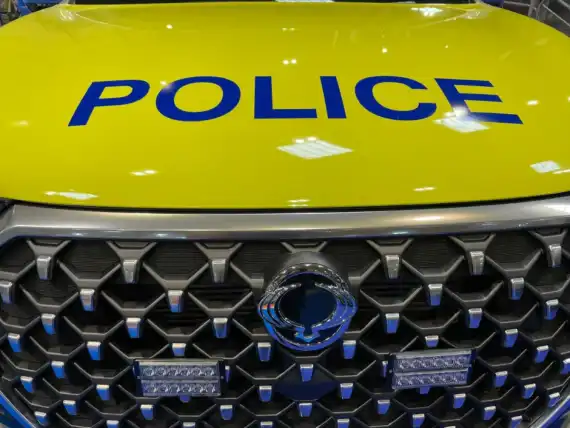
Phil said: “Because each vehicle is bespoke the costs can vary greatly, ranging from a complete vehicle supply and conversion starting at £18k net all the way through to a hundred thousand-plus with some being even more. Sometimes the car manufacturer is the customer who requests the conversion on behalf of a fleet arrangement. Sometimes the forces or services directly are the customer, sometimes it is through a direct tender award.”
And there are rules regarding the colours that are allowed and whether or not they are reflective. Phil explained that the police can use amber, yellow, blue and white. The Fire and Rescue vehicles are amber, yellow and red, the NHS ambulances are amber, yellow and green and traffic officers are in cars that are amber, yellow and white.
Then there is the Battenberg or half Battenberg markings which basically means there are two or more rows of alternating colour blocks – just like the cakes! So, clearly lots of decisions to be made.
With so many considerations, we asked South Wales Police how they selected the correct vehicle for the job.
A spokesman explained: “South Wales Police and other police forces across the UK work within the Blue Light Commercial Services Framework.
“The rule is to identify the vehicles required, and place these into their respective lots allowing a number of vehicles to be chosen. South Wales Police currently operates 941 vehicles; 442 marked and 489 unmarked. The other 10 are trailers or plant vehicles.”
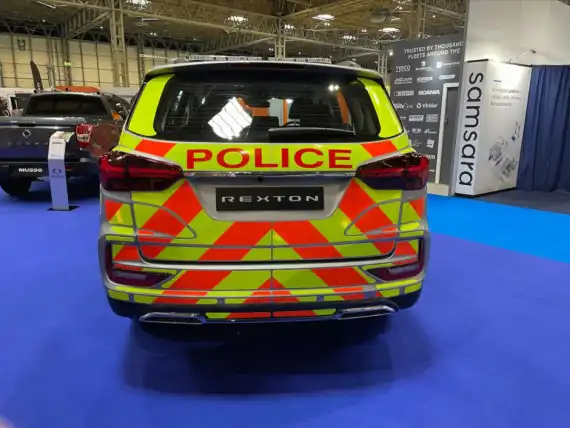
The Government, and in particular David Cameron when he was leader, criticised the police for selecting too many high performance cars, but those decisions are always justified as the spokesman said: “High performance vehicles are limited in availability. Marked high performance vehicles are either a BMW B57 (Estate) or a Volvo V90.
“The high performance vehicles can be amended for unmarked vehicles, however the power to weight ratio is taken into consideration.”
All in all, the transformation from showroom model to fully dressed emergency vehicle is quite a lengthy process with lots of decision-making along the way.
So, next time you spot a fully decked out emergency vehicle whizzing along, take a second to consider the extensive planning and work that has gone into producing the end result.

